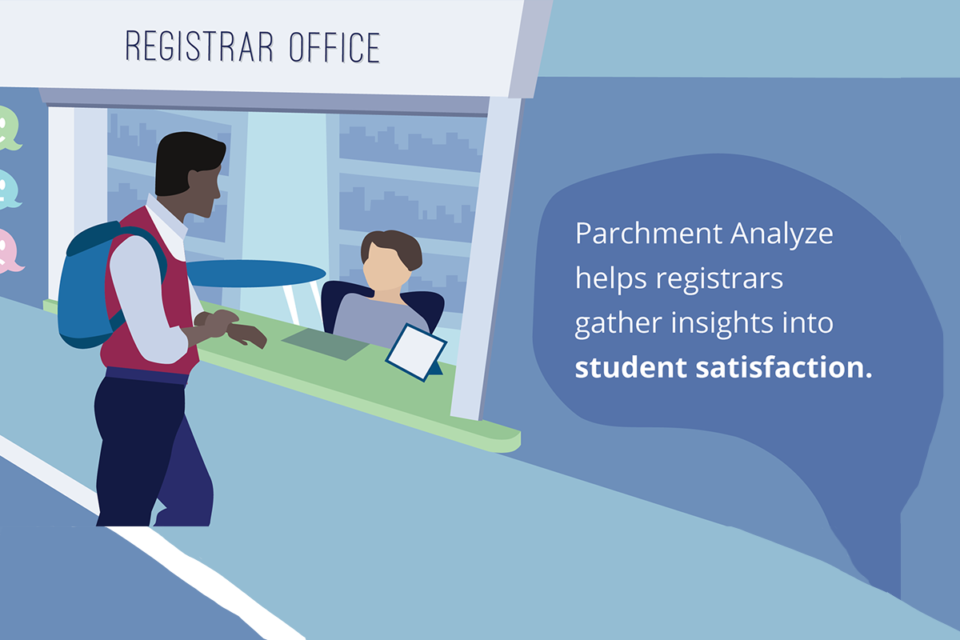
Higher Ed
The Power of AI for Credit Mobility
We use cookies to help you navigate efficiently and perform certain functions. You will find detailed information about all cookies under each consent category below.
The cookies that are categorized as "Necessary" are stored on your browser as they are essential for enabling the basic functionalities of the site. ...
Necessary cookies are required to enable the basic features of this site, such as providing secure log-in or adjusting your consent preferences. These cookies do not store any personally identifiable data.
Functional cookies help perform certain functionalities like sharing the content of the website on social media platforms, collecting feedback, and other third-party features.
Analytical cookies are used to understand how visitors interact with the website. These cookies help provide information on metrics such as the number of visitors, bounce rate, traffic source, etc.
Performance cookies are used to understand and analyze the key performance indexes of the website which helps in delivering a better user experience for the visitors.
Advertisement cookies are used to provide visitors with customized advertisements based on the pages you visited previously and to analyze the effectiveness of the ad campaigns.
Other cookies are those that are being identified and have not been classified into any category as yet.

What kind of data earns a spot in your year-end report? Even better question: How long is it going to take you to collect said data and finalize the report? Cue the groans.
Before you even get into the details of annual reporting, the first half of the battle is identifying the metrics you want to track and include in your year-end report. Here are seven of the most important ones:
What are the tasks that you and your administrators complete each day? How long does each one take you? Which months are your busiest ones? This breakdown of the registrar office’s main functions will help you understand workloads and identify if there’s an imbalance to correct in the upcoming year.
These analytics paint a realistic picture of the services your admins have access to, as well as which ones they actively use. That way, you’ll have a clearer idea of admin performance and can delete unused or unhelpful accounts.
Student record processing is a hefty portion of registrar responsibilities, which means it gets a lot of attention on the annual report. These analytics include order transaction statistics, such as the total number of each credential ordered and the percentage of paper versus electronic requests. Other metrics to track include the percentage of people placing the orders, such as students, third parties or admins. It also helps to understand the reasons for credential requests, as well as who fulfilled the orders.
Measure your enrollment services by reporting on registration adds and drops processed throughout the year. You can also differentiate between enrollment methods, such as online registration or manual verifications completed by registrar admins.
Your year-end report should also detail the course maintenance and assessment conducted by your team, such as the total number of approvals and cancelations. You can also include statistics surrounding the number of courses offered in the academic year, class updates and student petition requests.
One of the final sections in your report details the major projects your team focused on during the academic year. Bonus points when you list out projected initiatives for upcoming semesters.
Gathering insights into student satisfaction with registrar services can be a time-consuming task, but the information can dictate departmental improvements and process changes. For instance, overall rankings of service experiences and reasons for the response gives you a window into the student perspective.
We feel your pain: Data is difficult to manage and manipulate when it’s time to draft your annual report. Added to that, the trend analysis necessary to draw compelling conclusions from the data is a time-consuming, inefficient process. That’s why we created a unified analytics platform, designed to house all of your student credential stats in one easy-to-use dashboard.
With Parchment Analyze, you’ll have real-time insights that you can copy and paste straight into your report. And because we can’t bear the thought of you painstakingly collecting all this data manually, Parchment Analyze coming soon is part of the comprehensive credential management platform at no additional cost. Happy reporting!
